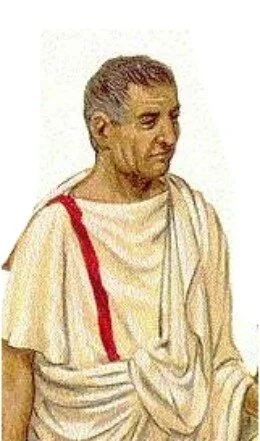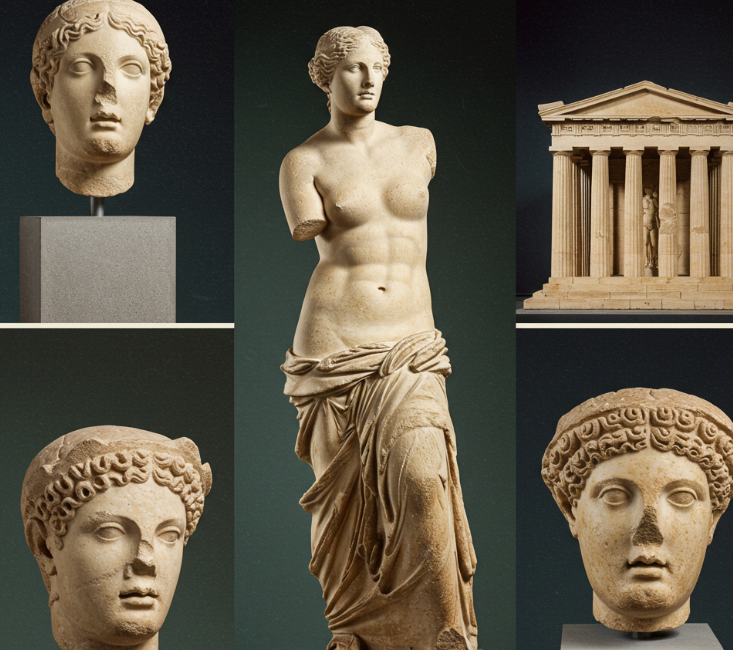Why Didn't Greeks and Romans Wear Pants?
In the annals of history, the dress codes of ancient civilizations not only inform us about their aesthetic preferences but also reflect deeper cultural norms and environmental adaptations. The Greeks and Romans, two of the most influential civilizations in the Mediterranean basin, opted against the use of trousers—a choice that reveals a wealth of information about their societies. Let's explore why pants were not a part of their wardrobes, focusing on cultural significance and perception, climate and comfort, practicality in clothing, and the flexibility and freedom of movement their chosen attire provided.
A warrior stands beside the family altar preparing to leave for war. He wears a short tunic under a “cuirass” (breastplate) and holds his spear in his left hand.
Cultural Significance and Perception
For the Greeks and Romans, clothing was a marker of identity and civilization. Trousers, or pants, were primarily worn by the so-called "barbarians" of the eastern and northern regions they encountered, such as the Persians and various Germanic tribes. These groups were often viewed by the Greeks and Romans as outsiders and less civilized. Thus, the adoption of trousers could imply a decrease in social status or a deviation from the cherished values and aesthetics of Greek and Roman societies. In this light, sticking to traditional garments such as togas and tunics was not only a fashion choice but a deliberate declaration of cultural identity and superiority.
Depictions of ancient Greek women’s attire of the type that strongly influenced late 1790’s clothing styles (especially in Paris). Five women are shown with a belt around the outside of their garments worn fairly high
Climate and Comfort
The Mediterranean climate, characterized by its mild winters and hot, dry summers, played a significant role in shaping the attire of the Greeks and Romans. The garments they chose—such as the toga, tunic, and Greek chiton—provided sufficient warmth for the cooler months and breathability during the summer. These clothes were ideally suited to their environment, negating the need for the heavier, more enclosing trousers worn in colder climates. Thus, traditional attire was not just a matter of cultural preference but also a practical response to local weather conditions.
Practicality in Clothing
The simplicity and functionality of Greek and Roman clothing also catered to the societal and functional needs of their civilizations. The chiton, toga, and tunic were simpler in design and construction compared to trousers, which may require more tailored fitting. These garments supported the activities held in high esteem within these cultures, such as public speaking, attending social gatherings, and participating in political life. The ease of wearing these garments facilitated a lifestyle that was both active and community-oriented.
Flexibility and Freedom of Movement
Another significant advantage of the traditional Greek and Roman garments was their allowance for greater freedom of movement. The loose-fitting nature of togas and tunics was essential for everyday activities, such as walking through the polis or forum, participating in public festivals, and engaging in physical exercises in gymnasia. This aspect of their design was crucial for a populace that valued civic participation and physical agility, which were less compatible with the restrictive nature of trousers.
An equestrian wearing his tunic, the Angusticlavia
Later Adoption of Trousers
It was not until the late Roman Empire that trousers began to gain popularity among the Greeks and Romans. This shift was largely driven by practical military needs and increased contact with cultures that traditionally wore them. As the Roman territories expanded and incorporated these 'barbarian' lands, the practical benefits of trousers in military and frontier contexts became undeniable, leading to a gradual shift in attire.
In conclusion, the absence of pants in ancient Greek and Roman wardrobes was a multifaceted decision influenced by cultural ideals, environmental factors, practical needs, and the physical demands of their lifestyles. It wasn't mere fashion, but a deep-seated expression of identity and adaptability to their world.
Statue of Emperor Tiberius showing the draped toga of the 1st century AD












